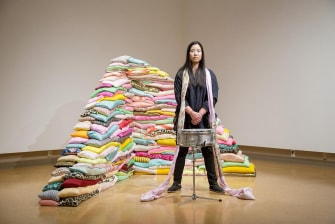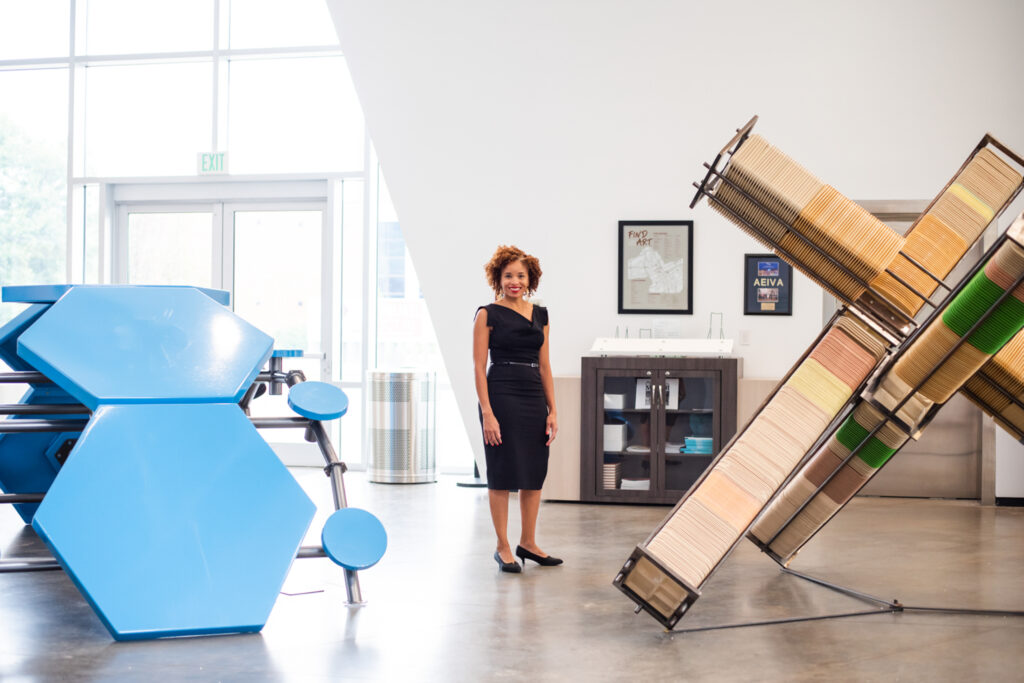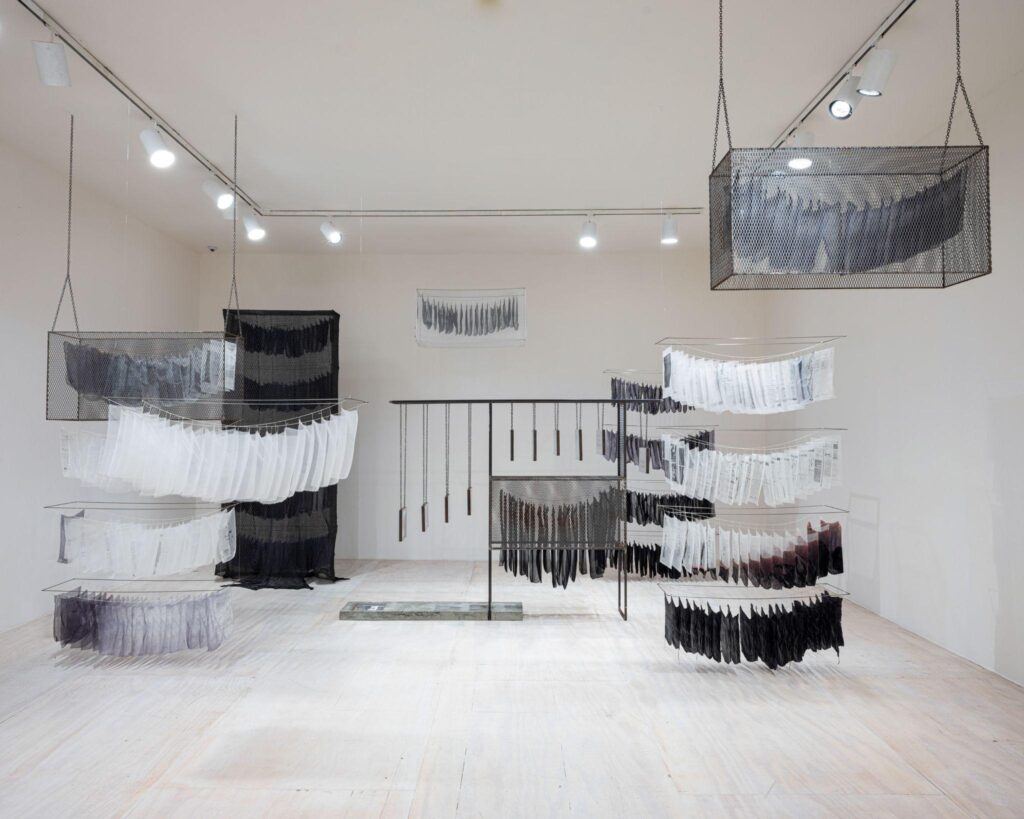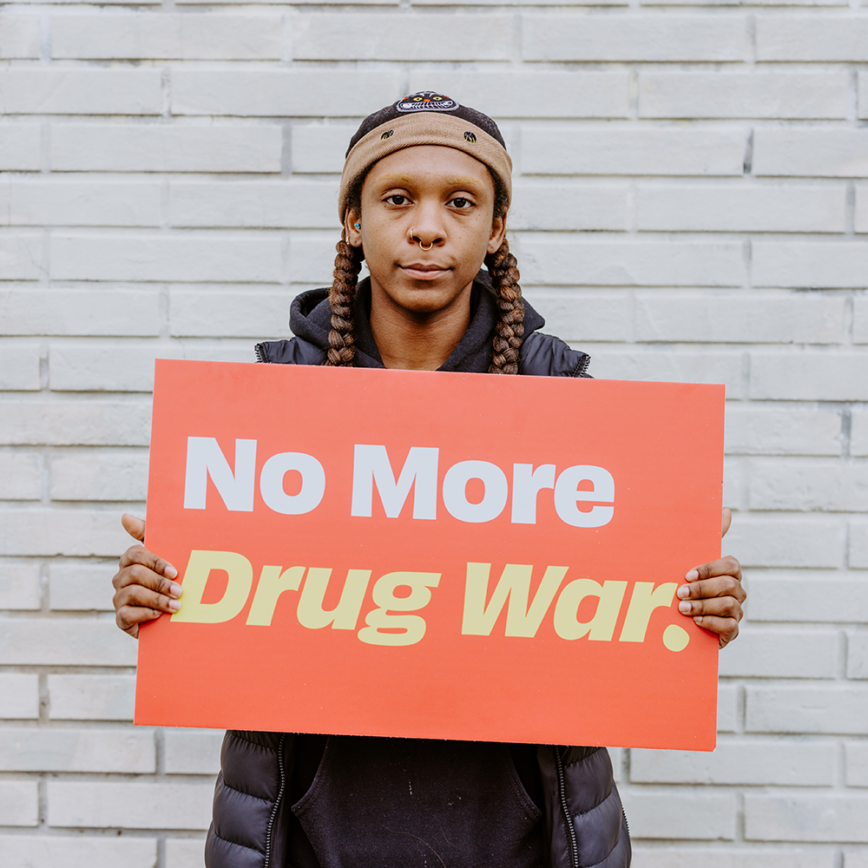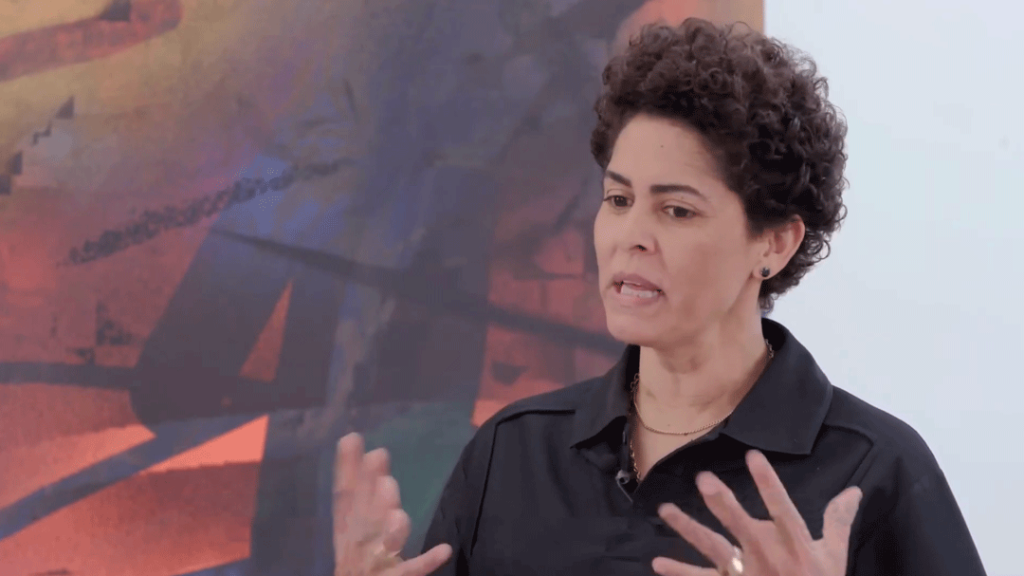Mass incarceration in the U.S. hits a record high: 2.3M people (a staggering 754 individuals per 100,000).



Cut-and-pasted printed paper, charcoal, and graphite on paper.
8 1/2 × 11 in.
Photo by Mark Strandquist and courtesy of Performing Statistics.
mixed media on birch panel, each panel 48 x 31 in.
From June 2017 to June 2023, the Art for Justice (A4J) Fund aligned artists, advocates, and allied donors to end mass incarceration, shift the narrative around criminal legal transformation, and envision a future where shared safety is available to all.
Inaugurated in 2017 under the unprecedented philanthropic vision of Agnes Gund, A4J concentrated on three major policy areas:
- Bail reform that reduced the number of people needlessly detained in jails.
- Sentencing reform that eliminated the excessive and disproportionate punishment of young people and people of color.
- The creation of meaningful re-entry opportunities for individuals who have been incarcerated in jails, prisons, and immigrant detention centers, enabling them to support themselves and their families.
A4J believed those with lived experience with the criminal legal system are often best positioned to imagine an accountable system that treats people with dignity and compassion. For this movement to succeed, formerly incarcerated and directly impacted individuals must have the support they need to lead this movement.

Photo by Erin Baiano.
With the institutional support of the Ford Foundation and Rockefeller Philanthropy Advisors, A4J leveraged its agility and momentum as a time-limited fund to support over 200 allied artists and arts and advocacy organizations (450 grants made in total). By the time of its sunset on June 30, 2023, A4J allocated over $127M to the field and inspired other funders to join the movement to end mass incarceration.
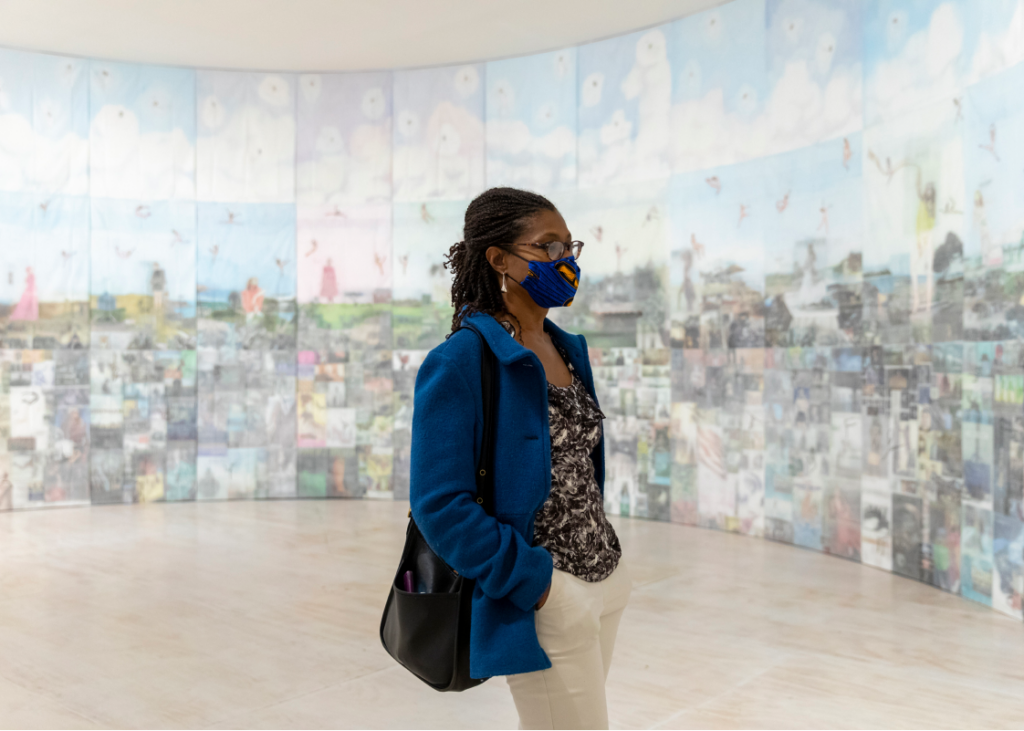

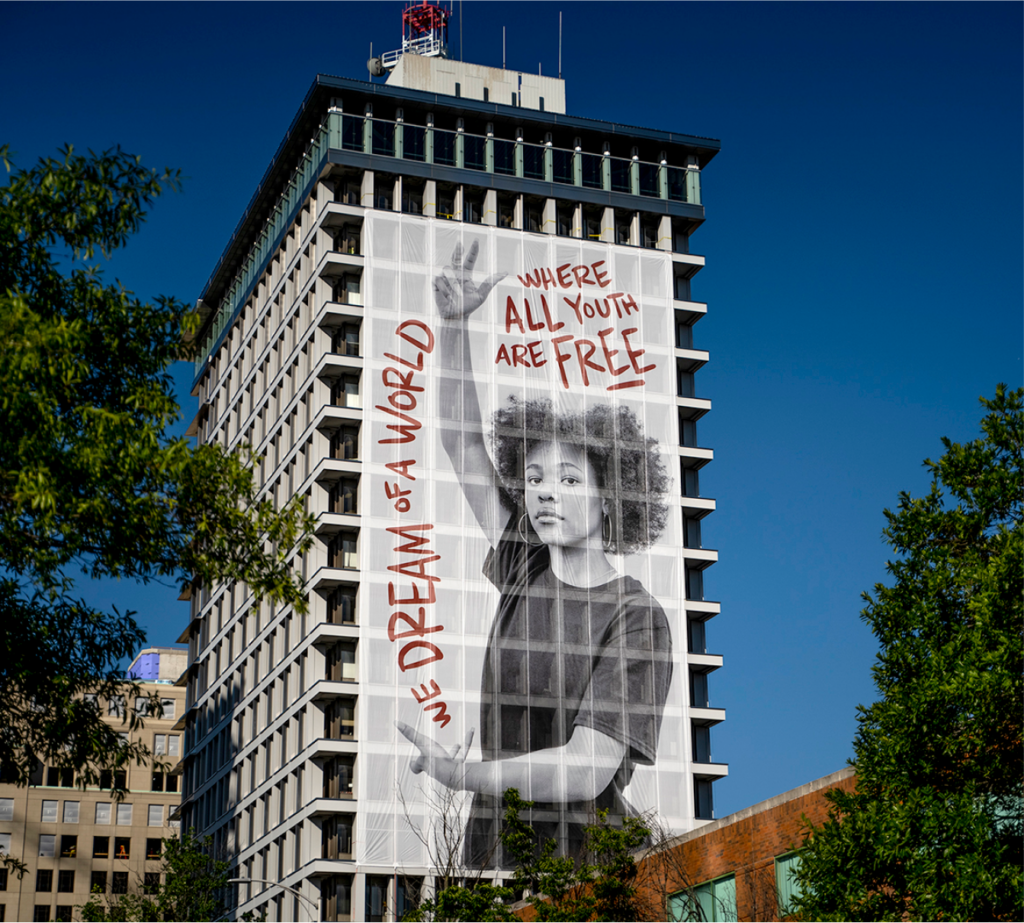
Photo by Mark Strandquist and courtesy of Performing Statistics.
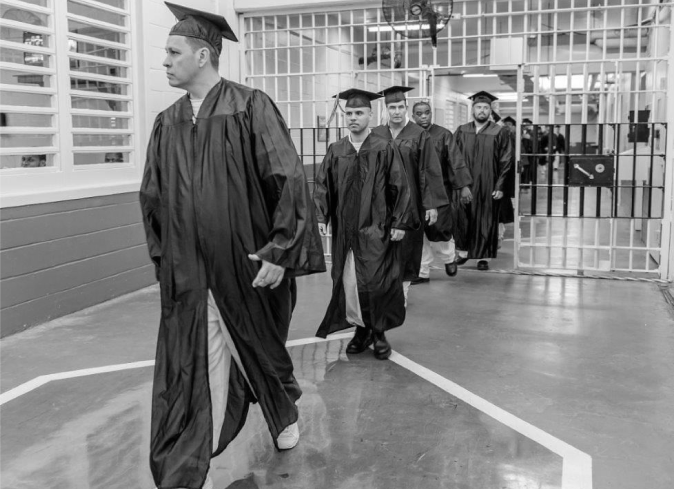
Photo courtesy of Bard Prison Initiative.
Founder

Philanthropist and founder Agnes Gund was inspired to take a stand against inequality in the criminal legal system after reading Michelle Alexander’s The New Jim Crow and Bryan Stevenson’s Just Mercy and watching Ava DuVernay’s 13th documentary.
She sold her beloved painting—Masterpiece by Roy Lichtenstein—to invest $100M in the founding of A4J. Though Gund had previously donated artwork, including more than 900 pieces to the Museum of Modern Art alone, this was the first time she sold a work of art in direct support of social justice.
Through the sale of Masterpiece, Gund elevated a unique model of philanthropy that allows art to expand its value and become a tool to advance social change.
Press

The Crisis
The U.S. continues imprisoning people at the highest rate in the world—far exceeding other countries. Black and Latine people remain disproportionately impacted by the system, including experiencing harsher surveillance and policing practices and longer sentences for the same crimes as their white counterparts. Given that the criminal legal system has deep roots in our history of chattel slavery, who remains most directly impacted by mass incarceration is not surprising.
On any given day in America, 450,000 people (roughly the population of Long Beach, CA) are being held in jails. These individuals haven’t been found guilty of a crime; they are being held because they can’t afford to pay cash bail to secure their release pre-trial. Wealth, not guilt, often determines who languishes inside.
Black and Latine people also receive disparate and excessive prison sentences in comparison to white people, with few opportunities for review and resentencing. Misguided laws passed during the “tough on crime” era doubled and tripled prison time, warehousing people for decades instead of preparing them to return to their families and rejoin society.
Mass incarceration and inadequate re-entry support systems undermine communities by separating families, removing workers from the economy, and barring people with records from housing, gainful employment, and voting.
Meanwhile, as of 2023, the carceral system continues to extract the labor of incarcerated people who are often forced to work for slave wages, producing goods and services that total an annual output of $11 billion. Financial incentives and corporate profits fuel the crisis of mass incarceration.
Milestones
Mural Arts Philadelphia launches The Guild, a paid apprenticeship for system-impacted young people.
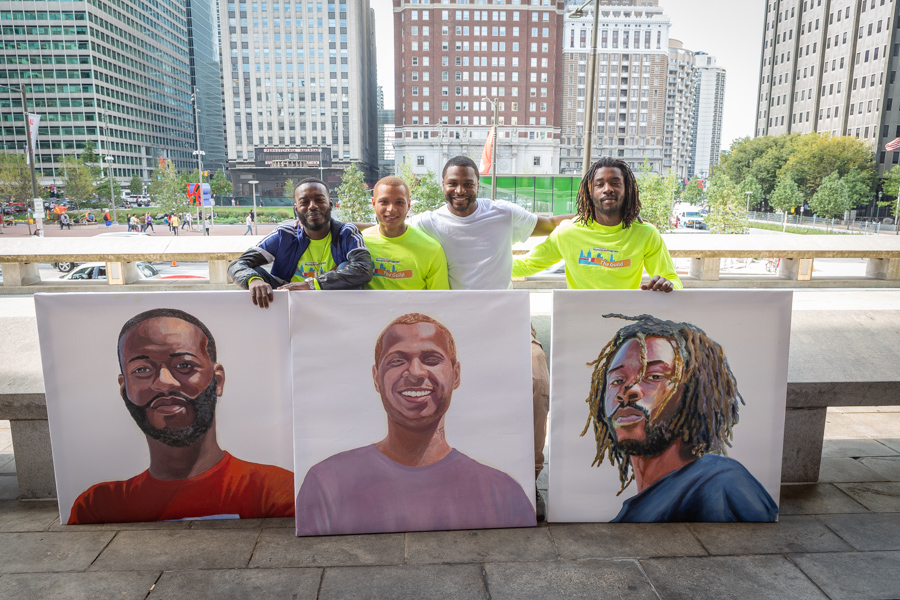
Michelle Alexander publishes The New Jim Crow: Mass Incarceration in the Age of Colorblindness (The New Press, 2010).
Dr. Nicole R. Fleetwood and Sarah Tobias organize Marking Time: Prison Arts and Activism Conference at the Institute for Research on Women, Rutgers University, with accompanying exhibition Prison Obscura and film program. Reginald Dwayne Betts is the keynote speaker.
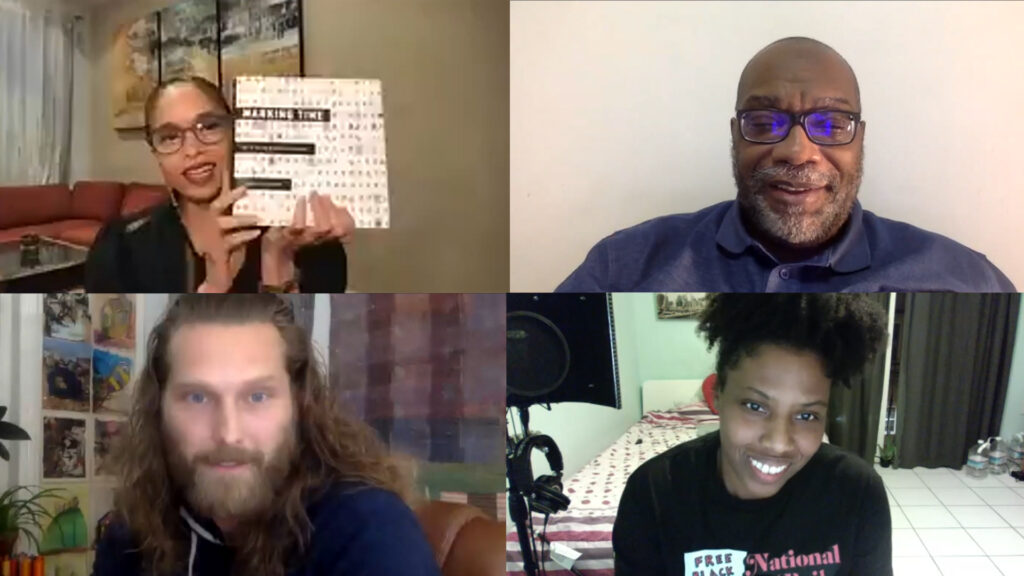
Mark Bradford donates proceeds from the sale of a limited-edition print series Life Size to A4J.
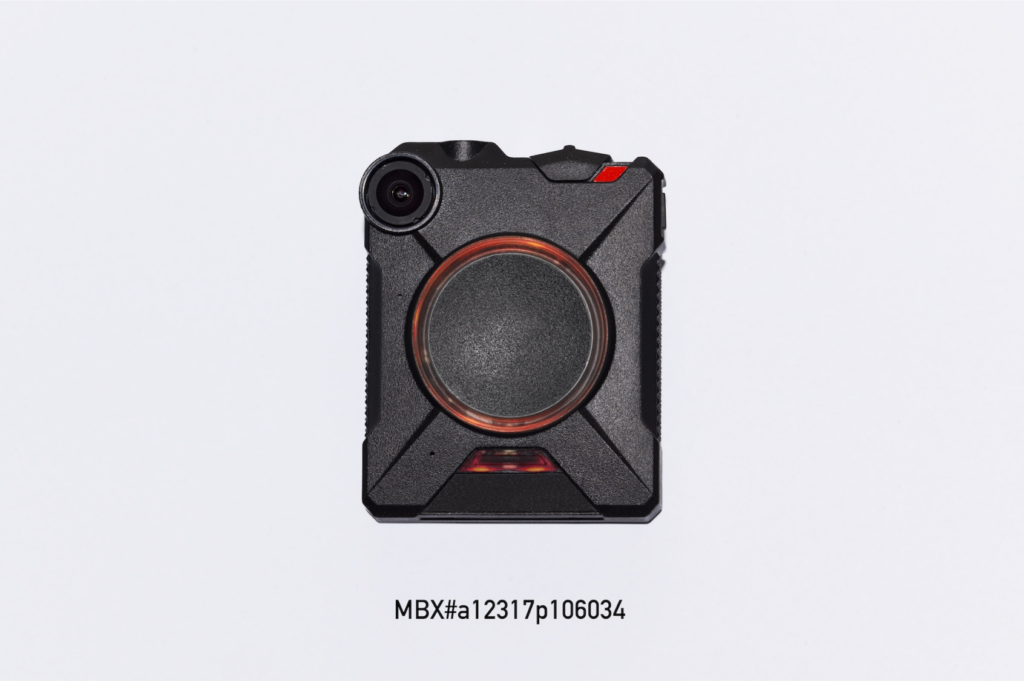
Explore Media
